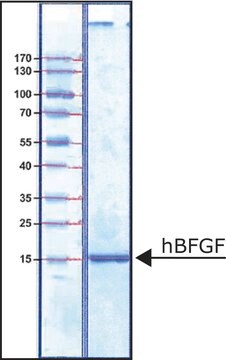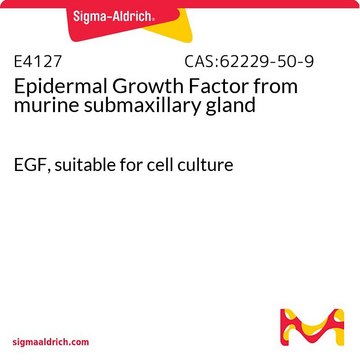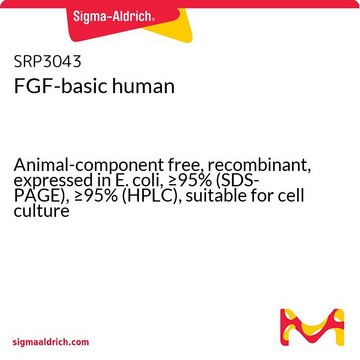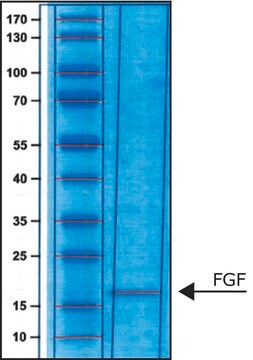SRP6159
FGF-basic human
recombinant, expressed in human cells, ≥95% (SDS-PAGE)
Synonim(y):
FGF-2, FGF-b, HBGF-2, HBGH-2, Prostatropin
About This Item
Polecane produkty
pochodzenie biologiczne
human
rekombinowane
expressed in human cells
Próba
≥95% (SDS-PAGE)
Formularz
lyophilized
masa cząsteczkowa
17 kDa (monomer, non-glycosylated)
opakowanie
pkg of 10 μg
metody
cell culture | mammalian: suitable
numer dostępu NCBI
numer dostępu UniProt
Warunki transportu
dry ice
temp. przechowywania
−70°C
informacje o genach
human ... FGF2(2247)
Opis ogólny
Działania biochem./fizjol.
Postać fizyczna
Uwaga dotycząca przygotowania
Rekonstytucja
Kod klasy składowania
11 - Combustible Solids
Klasa zagrożenia wodnego (WGK)
WGK 3
Temperatura zapłonu (°F)
Not applicable
Temperatura zapłonu (°C)
Not applicable
Wybierz jedną z najnowszych wersji:
Certyfikaty analizy (CoA)
Nie widzisz odpowiedniej wersji?
Jeśli potrzebujesz konkretnej wersji, możesz wyszukać konkretny certyfikat według numeru partii lub serii.
Masz już ten produkt?
Dokumenty związane z niedawno zakupionymi produktami zostały zamieszczone w Bibliotece dokumentów.
Klienci oglądali również te produkty
Nasz zespół naukowców ma doświadczenie we wszystkich obszarach badań, w tym w naukach przyrodniczych, materiałoznawstwie, syntezie chemicznej, chromatografii, analityce i wielu innych dziedzinach.
Skontaktuj się z zespołem ds. pomocy technicznej














